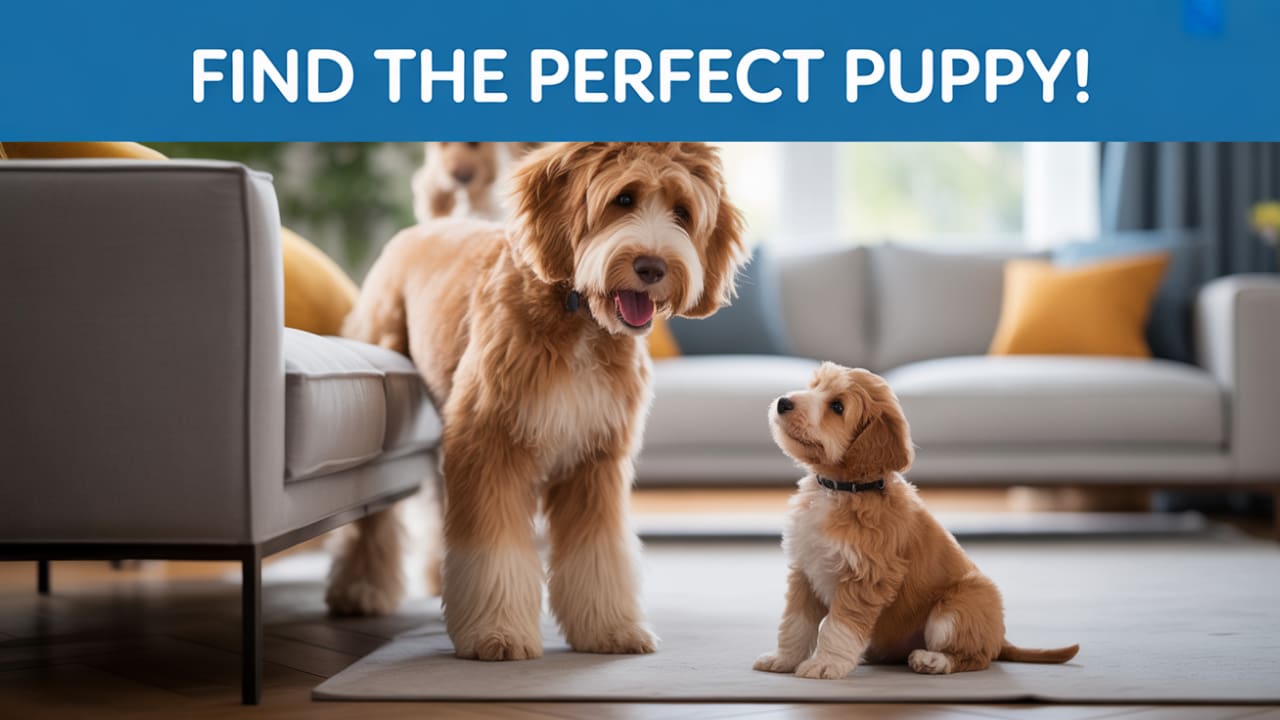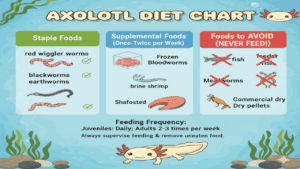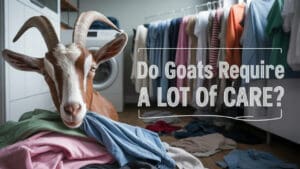Designer Puppies Buying Guide: Costs, Breeder Red Flags, Teacup Risks, and Must-Know Tips
You’ve seen the adorable photos, read the glowing breeder descriptions, and maybe even fallen in love with a fuzzy little face online. But are these designer puppies really the right fit for your life (and wallet)?
The truth is, many first-time buyers get swept up in the trend and end up overpaying by thousands, often for puppies bred without proper health checks or ethical standards.
Designer teacup breeds, for example, may seem perfect for small homes. But they’re also prone to fragile bones, hypoglycemia, and vet bills that quickly surpass the initial $4,000-$6,000 price tag.
It may even get more complicated than that. Not all breeders are created equal. Spotting red flags like missing health records or rushed transactions can save you from supporting a puppy mill, and save your pup from lifelong medical issues.
While some designer hybrids like Labradoodles may offer hypoallergenic coats and balanced temperaments, not every mix guarantees easy grooming or predictability.
Let’s break it down. This guide is built to help you see beyond the cuteness.
You’ll discover the real costs, the breeder traits you should look for, and whether a micro puppy is truly suited for your daily routine. Ready to separate fact from fluff? Keep reading then.
What is a designer puppy?

Designer puppies are the result of purposefully breeding two purebred dogs to create a hybrid with specific, desirable traits. They often combine temperament, appearance, and health characteristics.
These pups are not random mixes. They’re intentionally crafted companions. Think Labradoodle (Labrador + Poodle), Cockapoo (Cocker Spaniel + Poodle), or Puggle (Pug + Beagle).
The term “designer” stems from the deliberate pairing of breeds to engineer a dog that fits a modern lifestyle-compact, hypoallergenic, and family-friendly.
But you should know, not all designer puppies are the same. While the concept promises the “best of both worlds,” there’s a risk of inheriting the worst of both breeds too.
Yes, we’re talking behavioral issues, health vulnerabilities, or unpredictable traits if the pairing isn’t responsibly managed.
Some veterinarians say that the key to getting a well-adjusted designer dog is choosing one from an ethical, informed breeder who prioritizes genetics, health screening, and early socialization.
Another misconception? That designer means rare and rare means valuable. While boutique breeders may charge premium prices (ranging from $1,500 to over $5,000 for some micro designer dogs), cost doesn’t always correlate with quality.
Designer puppies are trending. But many buyers overpay without understanding what they’re actually getting, especially for teacup or “micro” versions that can come with heightened health risks.
So, what does this mean? If you’re considering a designer puppy, understand that you’re not just buying cuteness. You’re investing in a companion with specific needs, grooming demands, and lifestyle requirements.
Breeds like Maltipoos or Pomskies may be adorable. But without proper care and the right match, the experience can quickly turn overwhelming.
Before jumping in, evaluate what traits matter most to you. Is it size, activity level, coat type, or trainability? Compare them against the reality of owning a designer dog. Making an informed choice here could save you thousands in vet bills and behavioral training later.
Keep reading! Your ideal pup might be just a few insights away.
How much do designer puppies cost-and what are you really paying for?
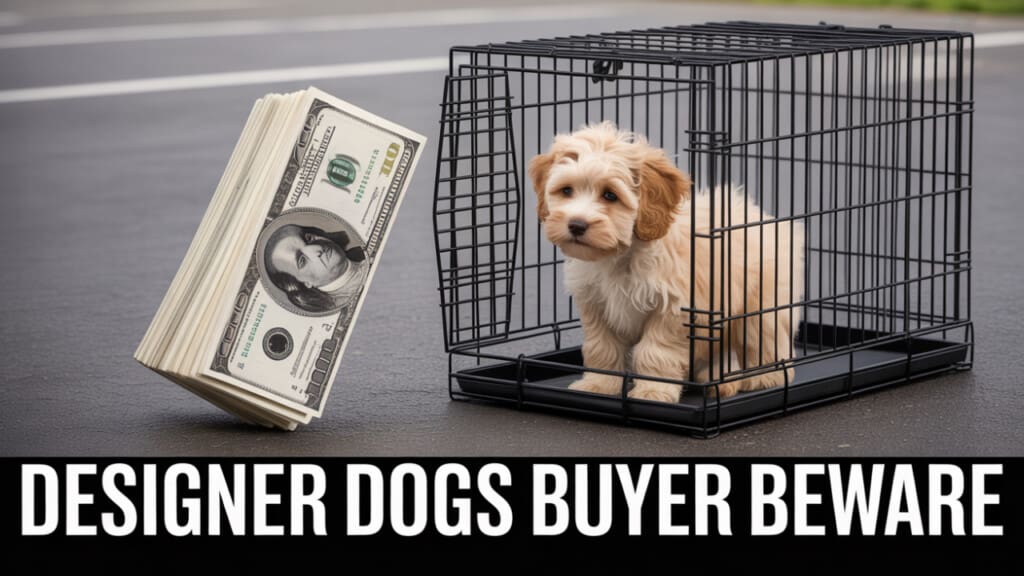
The price tag on a designer puppy can be as adorable (or shocking) as the puppy itself. While most buyers expect a premium for cuteness and convenience, the real question is this.
What are you actually buying when you shell out $2,000 to $5,000 (or more) for a designer dog?
Designer puppies, especially popular crosses like Goldendoodles, Cavapoos, and teacup breeds, often fall in the $1,500-$4,000 range. But ultra-rare or micro designer dogs from boutique breeders can fetch well over $6,000.
Factors that influence price include the reputation of the breeder, location, the puppy’s size and color, parent lineage, and whether early training or vaccinations are included. For instance, a Merle Frenchton from a highly rated breeder might cost twice as much as a standard Cockapoo from a local litter.
Remember this. You’re not just paying for the puppy. You’re paying for the genetics, the predictability of traits, early health screening, and even social media hype.
Many breeders invest in health testing (like OFA certification or DNA disease panels) and structured socialization during the first 8 weeks. This adds real value.
Ethical breeders also factor in the cost of caring for the mother, vet bills, quality nutrition, and long-term support.
That said, many buyers (often more than not) make this mistake. They think a high price equals quality and assume all breeders play by the same rules. That’s simply not true.
Most veterinarians agree that paying top dollar doesn’t always protect you from congenital issues. This is especially true if the breeder skips proper genetic screening or early health care.
Let’s think about your wallet (and your future). Before you hand over thousands, ask what’s included. Vaccinations, vet checks, spay/neuter, temperament guarantees, and post-purchase support…
A well-priced designer puppy is one that balances upfront cost with long-term health, temperament, and support. Make sure the investment pays off in peace of mind, not surprise medical bills.
Average Labradoodle Prices by City (Compared to U.S. Average: $2,800)
- Los Angeles (ZIP 900xx): $3,950 – 41% more than average
- New York City (ZIP 100xx): $4,200 – 50% more than average
- Chicago (ZIP 606xx): $2,750 – 2% less than average
- Oklahoma City (ZIP 731xx): $1,900 – 32% less than average
Areas where prices are 30% or more above the U.S. average are marked as alert zones. This usually means the prices may be inflated due to broker mark-ups.
How to spot ethical designer dog breeders (and avoid puppy mills)
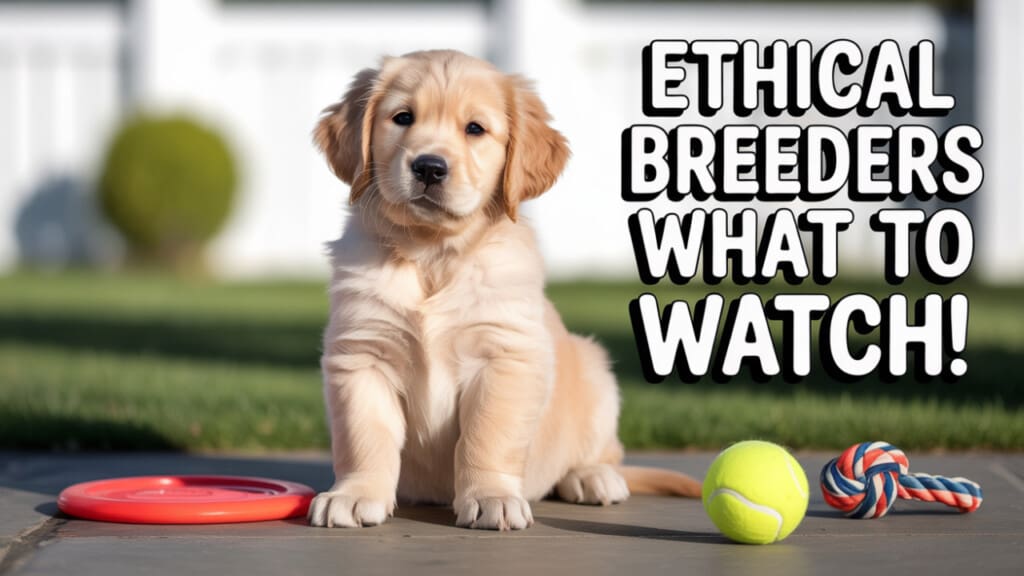
When it comes to designer puppies, knowing how to spot an ethical breeder can mean the difference between a happy, healthy pet and years of costly heartbreak.
Puppy mills often disguise themselves behind polished websites and cute puppy pictures. But a closer look reveals red flags no buyer should ignore.
An ethical designer dog breeder prioritizes the health, safety, and socialization of every puppy. Look for signs like transparent health testing (including genetic screening for inherited conditions), in-home breeding environments, and a willingness to let you meet both puppy and parents.
These breeders don’t rush litters. They plan them carefully, limit how often a female is bred, and often include post-adoption support or contracts.
Now, a lot of buyers fall for flashy marketing or quick availability. One of the biggest mistakes people make is prioritizing convenience over credibility.
Ethical boutique puppy breeders typically have waitlists, offer detailed puppy profiles, and won’t ship dogs without a conversation or screening process. If someone’s eager to close the sale and ship overnight, one word, run.
Veterinary professionals generally agree that reputable breeders should provide proof of vaccinations, early vet care, and socialization exposure (like being around children, noise, and other pets).
Bonus points if they’re members of breed-specific organizations or follow guidelines from associations like the American Kennel Club’s Bred with H.E.A.R.T. program. That really helps.
Also, here’s a quick tip. Ask for references from past buyers. Don’t hesitate to request a virtual tour or visit the premises. Ethical breeders welcome transparency. Puppy mills? They avoid it.
Buying a designer puppy isn’t just about finding the “cutest one.” It’s about choosing a healthy, ethically raised companion for the next decade or more.
Take your time, do your homework. And when in doubt, walk away. The right breeder will never pressure you. They’ll help you make the best decision for your home and heart.
Are designer teacup puppies and tiny breeds right for your lifestyle?
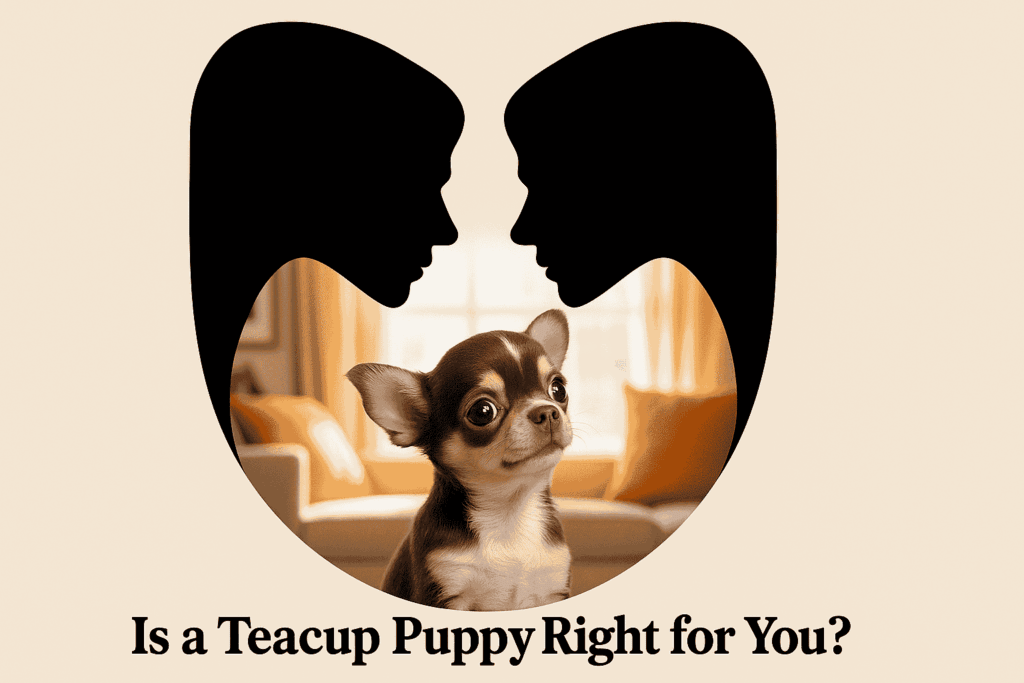
Tiny paws, fluffy coats, and wide eyes. Designer teacup puppies are irresistibly cute. But don’t let their miniature size fool you. These tiny designer puppies may fit in a purse. But their needs can be bigger than you think.
Choosing one should never be based on looks alone. It’s about compatibility with your daily life, home environment, and long-term commitment.
Teacup breeds like teacup Maltipoos, Yorkipoos, and micro Pomskies are intentionally bred to remain exceptionally small, often under five pounds as adults.
That petite size comes with perks. They’re easy to carry, space-efficient in small homes or apartments, and often appeal to first-time dog owners.
But, on the flip side, their size also makes them incredibly fragile. Accidental falls, rough handling by young children, or skipped meals can quickly turn into emergency vet visits.
What most buyers don’t realize is that teacup puppies typically require more frequent vet care, specialized feeding schedules, and close temperature regulation.
Also, fair warning. These breeds are prone to hypoglycemia, heart defects, and collapsed tracheas. These are conditions that can be expensive and emotionally draining.
In other words, their upfront price (often $3,000-$7,000) is only the beginning.
Anyway, if your lifestyle includes lots of travel, a predictable schedule, and an adult-only household, tiny designer dogs may be a good fit.
But if you have active kids, a bustling home, or little time for close supervision, a slightly larger hybrid like a Cavapoo or Cockapoo may be a safer, more sustainable choice.
The bottom line? Tiny dogs aren’t low-maintenance. They’re high precision. If you’re ready to commit to delicate care, soft handling, and the costs that come with boutique breeding, a designer teacup puppy might be right for you.
Just make sure your lifestyle matches their vulnerability before you fall for their size.
What health, grooming, and care needs should you expect?
They may be designer by name. But these hybrid pups will surely need your everyday commitment. Sometimes even more than their purebred counterparts.
From regular coat maintenance to potential long-term health concerns, owning a designer puppy means preparing for a well-rounded care routine that supports both their appearance and well-being.
Most designer puppies, like Cavapoos, Goldendoodles, or Shihpoos, inherit fluffy, low-shedding coats that need frequent grooming to stay tangle-free and clean.
You’ll likely need to take them for professional grooming every 4 to 6 weeks. The cost should range (on average) between $60 and $100 per session.
In between, expect to brush their coat at least two to three times a week to prevent matting. Skipping this care may lead to painful skin issues, hotspots, and increased vet bills. This is something many first-time owners overlook.
Conditions like hip dysplasia, patellar luxation, ear infections, and dental problems are still common. Teacup variants may face even steeper challenges, including heart murmurs, low blood sugar, and respiratory issues due to their size and fragile bone structure.
Also… designer dogs often need a specific diet tailored to their size, breed mix, and potential sensitivities.
Veterinary professionals suggest investing in a high-quality, breed-specific diet to help reduce long-term health risks and vet expenses. Probiotic supplements, omega-3s, and routine dental care should also be part of your monthly plan.
So, what does this mean for your lifestyle and budget? Well, expect to invest both time and money, not just in play and cuddles, but in structured care.
From grooming appointments to health screenings, the cost of keeping your designer dog looking and feeling their best adds up. But for many, the reward is a healthier, happier companion who thrives in your home for years to come.
Designer puppies vs. purebred dogs: What’s the difference and which is better?
If you’re torn between choosing a designer puppy or a purebred dog, you’re not alone. Many modern pet owners find themselves at this exact crossroads.
Each option offers unique benefits, challenges, and costs. So, what truly sets them apart, and which choice aligns better with your lifestyle?
Purebred dogs are bred for consistency. They’ve been developed over generations to meet strict breed standards in appearance, temperament, and function. This makes them more predictable in size, coat type, energy level, and even health predispositions.
Breeds like the Golden Retriever or French Bulldog come with well-documented traits and histories. This is especially helpful for owners looking for specific characteristics.
But, some purebreds are prone to inherited genetic issues due to narrow breeding pools, such as hip dysplasia, heart conditions, or respiratory problems.
Designer puppies, on the other hand, are the intentional mix of two purebred parents to combine desirable qualities. You can think hypoallergenic coats, compact size, or more balanced temperaments.
Popular hybrids like Labradoodles or Pomskies often exhibit what’s known as hybrid vigor. This means they can sometimes be healthier due to increased genetic diversity.
But this benefit isn’t guaranteed. Unethical breeding, especially from puppy mills, can reintroduce health problems or yield unpredictable temperaments if genetics aren’t properly managed.
Cost-wise, both options can run high. A reputable purebred dog can cost $2,000 or more, especially if it comes from champion lines.
Designer breed puppies for sale, especially teacup or micro versions, may range from $3,000 to $6,000 depending on rarity and breeder reputation.
What most people don’t realize is that the price tag reflects more than just looks. It often includes early vet care, training, and health screening.
So, which is better? It depends on your priorities. If you want predictability and tradition, a purebred may suit you. If you’re looking for specific traits blended together, like low shedding or a more social temperament, a designer puppy might be your best match.
Either way, choosing an ethical breeder is the most important decision you’ll make.
Common mistakes first-time buyers make (and how to avoid them)
Buying a designer puppy is exciting. But it’s also where many first-time buyers stumble. With irresistible photos and heart-tugging ads, it’s easy to fall in love before doing the homework.
Unfortunately, that emotional rush often leads to poor decisions, unnecessary costs, and long-term regrets. So take note of some of these mistakes.
One of the biggest is buying from the first breeder who responds. People assume that availability equals quality. But really, reputable breeders often have waitlists for a reason.
Rushing into a purchase without researching the breeder, understanding the puppy’s lineage, or seeing health certifications is a common path to disappointment.
We advise you to always request documentation. This includes proof of vaccinations, health screenings, and even references from past buyers.
Another trap? Choosing a breed based on looks alone.
Just because a designer teacup puppy is small and adorable doesn’t mean it fits your lifestyle. Tiny designer puppies often come with higher health risks and require more delicate care.
A low-shedding doodle may sound appealing. But some hybrids inherit high-maintenance coats anyway. Meaning… more time and money spent on grooming than expected.
Let’s not forget hidden costs. First-time buyers frequently underestimate the long-term expenses of owning a designer dog.
Think of the premium food, frequent grooming, pet insurance, training sessions, and potential emergency vet visits. What feels like a $3,000 splurge upfront can quickly become a $10,000 commitment over just a few years.
Take a breather. Avoid impulse buys by pausing and asking key questions. About breeder ethics, breed compatibility, and care requirements. Make a checklist and stick to it. Again, responsible breeders won’t rush you. They’ll educate you.
Overall, if you’re buying your first designer puppy, slow down and plan ahead. The right decisions now will shape your relationship with your new companion for the next 10-15 years.
The Puppy Broker Trap: How That Cute Instagram Message Could Make You Pay 40% More
Between 2023 and 2025, there was a huge rise in social-media “puppy agents”-people who sell puppies through platforms like Instagram. According to a LinkedIn marketplace report, some brokers take 25–50% of every puppy sale. The average commission is 40% on expensive breeds like doodles and French bulldogs. A Rolling Stone investigation found that these brokers buy puppies in bulk from large breeders in the Midwest, then resell them online with big price increases–adding $800 to $2,000 to each puppy’s price.
Red-Flag Broker Behaviors
| Behavior | What You Should Do |
| Slick profile, no physical kennel address | Do a reverse-image search on the puppy photos to check if they are used on multiple websites. |
| Only accepts Venmo, Zelle, or gift cards | Ask to pay using escrow or credit card-real breeders use secure payment options. |
| Refuses live video with dam & litter | Ask for a live video call with the mother and puppies-89% of good breeders are happy to do this. |
Also, brokers often promise free delivery using a “puppy nanny.” This is often a sign of mass shipping from puppy mills.
Frequently Asked Questions About Buying Designer Puppies
Buying a designer puppy comes with excitement (and, as you can see, a lot of questions). From pricing confusion to breeder selection and long-term care, knowing the facts before you commit is critical.
Below are the top 10 most-asked questions from real prospective buyers, answered clearly to help you make an informed, confident decision.
1. How much do designer dogs cost?
Designer dogs typically cost between $1,500 and $5,000, depending on the breed, size, breeder reputation, and included services like vet care or training.
2. What is the most expensive puppy?
Teacup and rare-colored designer breeds, such as micro Pomskies or Merle French Bulldogs, can cost over $10,000 from high-end boutique breeders.
3. What are the disadvantages of designer dogs?
Disadvantages may include health issues from unethical breeding, high grooming maintenance, and unpredictable temperament if genetics aren’t managed carefully.
4. Are designer puppies better than purebred dogs?
Designer puppies may offer hybrid vigor and mixed-trait advantages, but “better” depends on your lifestyle, expectations, and how responsibly the dog was bred.
5. Where is the best place to buy designer breed puppies for sale?
Reputable boutique breeders or verified adoption agencies with health screening protocols, transparent records, and ethical practices are the safest sources.
6. Are designer puppies hypoallergenic?
Some designer breeds like Labradoodles are bred for lower allergen levels. But no dog is fully hypoallergenic. Regular grooming helps reduce reactions.
7. What is the difference between a designer dog and a mixed breed?
Designer dogs are intentional crosses between two purebreds with specific traits in mind, while mixed breeds are often the result of unplanned pairings.
8. Are tiny designer puppies harder to care for?
Yes, teacup and tiny designer puppies require delicate handling, specific feeding routines, and are more prone to health complications like hypoglycemia.
9. How do I avoid puppy mills when shopping for a designer puppy?
Always ask for breeder credentials, health records, and visit or video tour the facility. Ethical breeders are transparent and will never pressure a sale.
10. Is it worth paying more for ethical designer dog breeders?
Absolutely. Ethical breeders ensure better health, socialization, and long-term support. This often saves you thousands in future vet bills and behavioral training.
Still on the fence? Take this list with you when contacting breeders or researching your next pet. The right puppy starts with the right questions. And now, you’ve got a head start.
What’s the smartest way to buy a designer puppy with confidence?
It comes down to knowing what you’re really paying for. And it should be beyond the wagging tail and cute face.
From spotting ethical breeders and avoiding overpriced puppy mills to understanding whether teacup breeds fit your lifestyle, you’ve now got the insights most first-time buyers miss.
You’ve learned that the cost can range from $1,500 to over $10,000 depending on breeder credibility and breed rarity. And that skipping health screenings is one of the most expensive mistakes you can make.
So, this means you’re not just choosing a puppy. You’re making a long-term investment in health, happiness, and compatibility.
Feeling ready? Start by researching trusted boutique breeders and asking the right questions. The right designer puppy isn’t just adorable. It’s a perfect fit.
Thinking about getting a designer puppy? Let us know which breed you’re considering in the comments.

